The different types of jigsaw blades are T-shank, U-shank, and non-shank.
If you’re a DIYer who is just getting into woodworking, you may be wondering what are the different types of jigsaw blades available.
There are many different types of jigsaw blades available, each designed for a specific type of cut and material. The most common blade types are standard, T-shank, and U-shank. Those are used for various material cutting like wood, plastic, light metals, etc.
A jigsaw is a versatile power tool that can be used for cutting various materials, including wood, metal, plastic, and more. But, to get the best results from your jigsaw, it’s important to choose the right blade for the job.
So, let’s explore the different types of jigsaw blades and discover how each one can elevate your woodworking or metalworking.
What Is A Jigsaw Blade?
A jigsaw blade is a cutting tool that is attached to a jigsaw, which is a power tool. Jigsaws are used for cutting curves, angles, and straight lines in a range of materials such as wood, metal, and plastic.
Jigsaw blades are available in a variety of forms, sizes, and blade styles, each suited to a specific sort of cut and material. They’re usually composed of high-carbon steel or bi-metal, and they contain teeth along one edge that cut into the material as the blade goes back and forth.
Jigsaw blades are replaceable, so you can quickly change them depending on the sort of cut and material you’re working with.
What Are The Different Types Of Jigsaw Blade?
Day by day, different companies lunch different types of jigsaw blades.
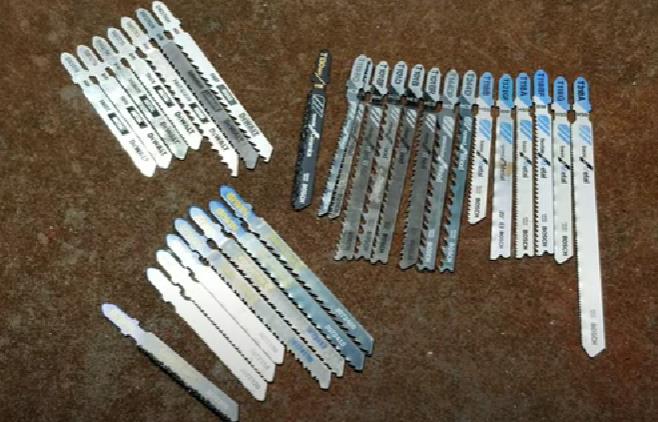
There are many different types of jigsaw blades, each designed for a specific type of material or cut.
Here are shared the 5 best types of jigsaw blades, each with its own unique uses, advantages, and disadvantages.
T-shank blade:
The T-shank blades are the most common type of jigsaw blade, compatible with most jigsaw makes and models. These blades have a T-shaped shank that fits into a jigsaw’s T-shaped chuck.
They are used to make precise cuts in a wide range of materials. Increased stability and less vibration are two advantages. One disadvantage is the restricted supply.
U-shank Blade:
Less common than T-shank blades, but still compatible with many jigsaw models. These blades include a U-shaped shank that suits into a U-shaped chuck on the jigsaw.
They are used for making precise cuts in a variety of materials. Advantages include increased stability and reduced vibration. Disadvantages include limited availability.
Scroll Blades:
These blades have angled teeth and are used to make delicate, decorative cuts in softwoods and other materials. The benefits include clean, ornamental cuts and less splintering. Poor performance in dense materials and greater blade wear are disadvantages.
Straight Blades:
Straight blades feature straight teeth and are used to cut straight in softwoods and other materials. The benefits include versatility and comfort of use. One disadvantage is that it performs poorly in dense materials.
Clean/Fast Cut Blades:
These blades have fine, closely spaced teeth and are designed to make quick, clean cuts in a variety of materials. Fast cutting and less splintering are two advantages. Increased blade wear and shorter blade life are two disadvantages.
When choosing a jigsaw blade, be sure to select the type that is best suited for the material you will be cutting. Using the wrong type of blade can damage your jigsaw or the material you are cutting.
Which Blade Should I Use for Which Material?
The different types of jigsaw blades are: toothed, plain, and wavy.
There are a few different types of blades that you can use for different materials, and it is important to know which one to use so that you can get the best results.
The type of blade you need will depend on the material you’re cutting. For example, if you’re cutting metal, you’ll need a different blade than if you’re cutting wood.
Here is a breakdown of some of the most common materials and the best type of blade to use:
- Jigsaw Blade Types for Wood: For cutting softwoods, use a straight blade or a scroll blade. For cutting denser hardwoods, use a clean/fast-cut blade or a metal cutting blade.
- Jigsaw Blade Types for Metal: A metal cutting blade is designed for cutting metal including aluminum, steel, and iron. It has teeth that are made of a hard, durable material that can withstand the heat generated by cutting metal. This type of blade is also used for cutting tile and stone
- Plastic Cutting Blade: This blade is designed for cutting plastic. It has teeth that are made of a hard, durable material that can withstand the heat generated by cutting plastic. This type of blade is also used for cutting tile and stone.
- For Laminate: For cutting laminate, use a clean/fast-cut blade or a metal cutting blade.
- Tile Cutting Blade: This blade is designed for cutting tile. It has teeth that are made of a hard, durable material that can withstand the heat generated by cutting tile. This type of blade is also used for cutting stones.
When you’re choosing a jigsaw blade, it’s important to select the right one for the material you’re going to be cutting. If you’re not sure which blade to use, ask a salesperson at your local home improvement store.
What Are The Benefits Of Each Type Of Blade?
There are many benefits to having different types of blades.
We all know that blades come in all shapes and sizes, but did you know that some types of blades offer different benefits?
Here’s a quick rundown of the most common types of blades and what they’re good for:
Straight blades: These are the most versatile type of blade and can be used for everything from slicing vegetables to chopping wood.
Serrated blades: These blades have saw-like teeth that make them great for cutting through tough materials like meat or bread.
Recurved blades: These blades are curved inward, which gives them extra cutting power. They’re great for slicing through thick materials.
Chisel blades: These blades are wide and flat, making them ideal for chopping or slicing.
So, there you have it. Now you know the benefits of each type of blade. So, the next time you’re in the market for a new knife, you’ll be able to choose the right one for the job.
What Are The Different Shapes Of Jigsaw Blades?
There are many different shapes of jigsaw blades, including those for specific purposes such as cutting curves or circles.
Jigsaw blades come in a wide variety of shapes and sizes, each designed for a specific purpose. The most common shapes are the U-shape, the T-shape, and the P-shape.
The U-shape is the most versatile of the three and can be used for a variety of tasks, such as cutting curves and circles. The T-shape is designed for making straight cuts, while the P-shape is ideal for cutting circles and other circular shapes.
When choosing a jigsaw blade, it is important to consider the material you will be cutting and the type of cut you need to make. For example, if you are cutting metal, you will need a different blade than if you are cutting wood.
There are many different brands and types of jigsaw blades on the market, so it is important to do your research before making a purchase. You can find a jigsaw blade variety at your local hardware store or online.
How Do You Choose The Right Type Of Blade For The Job?
The blade you choose should be based on the material you’re cutting and the thickness of that material.
As long as you know about what are the different types of jigsaw blades. But when it comes to choosing the right type of blade for the job, there are a few things you need to take into consideration.
Let’s check out the jigsaw blade selection guide.
Jigsaw Blade Material Types
First, you need to think about what type of material you’ll be cutting. Different materials require different types of blades. For example, if you’re cutting metal, you’ll need a different type of blade than if you’re cutting wood.
Blade Size
Second, you need to think about the size of the material you’ll be cutting. Different sizes require different types of blades. For example, if you’re cutting large pieces of metal, you’ll need a different type of blade than if you’re cutting small pieces of wood.
Jigsaw Blade Shapes
Straight, U-shank, T-shank, bayonet, clean/fast cut, scroll, metal cutting, and plunge cut blades are among the different jigsaw blade shapes. Each blade shape is intended for a specific sort of cut and material, so select the appropriate one for your work based on your cutting requirements.
Jigsaw Blade Applications
Consider the speed and precision you need. Fine teeth blades provide a smoother, more accurate cut, while coarse teeth blades cut faster but rougher.
Jigsaw Blade Compatibility
Jigsaw blade compatibility relates to the compatibility of the blade with the jigsaw with which it will be utilized. Check the shank shape and blade length to make sure they are compatible with your jigsaw’s chuck and capacity. The blade should also be tailored to the material and cut you require.
Once you’ve considered all of these factors, you should have a good idea of what type of blade you need for the job. If you’re still not sure, there are plenty of resources available that can help you choose the right type of blade for the job.
How Do I Identify A Jigsaw Blade?
You should look for the following characteristics when identifying a jigsaw blade:
- Tooth count: The number of teeth on the blade will tell you what types of cuts it can make.
- Longer blades: Longer blades are preferable for straight cuts, whereas shorter blades are preferable for tight curves.
- Teeth per inch (TPI): A higher TPI results in finer cutting.
- Best jigsaw blades for different materials: Blade materials include high-speed steel, bi-metal, and tungsten carbide.
- Shank shape: The shank shape of your jigsaw must match the chuck shape.
- Cut type: There are several cut kinds, including straight, scroll, and metal cutting, each with its own set of blades.
By taking these elements into a version, you may select the best blade for your particular job and jigsaw.
Tips for Using A Jigsaw Blade
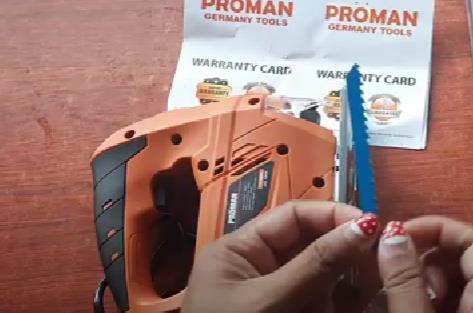
Here are some pointers on how to use a saw blade effectively:
- Select the proper blade that is made for the material and cut you require.
- Before beginning the cut, make sure the blade is securely fixed in the chuck.
- Adjust the jigsaw speed based on the material and thickness of the workpiece.
- Start the cut slowly and gradually raise the speed to prevent the blade from breaking or bending.
- To guarantee a straight and accurate cut, control the blade perpendicular to the workpiece.
- Don’t force the blade through the material. Instead, let the jigsaw do the work.
- Replace blades on a regular basis to keep them sharp and prevent damage to the workpiece.
By following these guidelines, you can use a jigsaw blade safely and effectively to reach your goals.
FAQ_ What are the different types of jigsaw blade
What Are The Different Sizes Of Jigsaw Blades?
1. T-shank blades are the most common type of blade and are compatible with most jigsaw models. They are available in a variety of sizes and tooth configurations to suit different materials and applications.
2. U-shank blades are less common than T-shank blades and are not compatible with all jigsaw models. They are available in a variety of sizes and tooth configurations to suit different materials and applications.
3. Combo blades are a combination of T-shank and U-shank blades and are compatible with most jigsaw models. They are available in a variety of sizes and tooth configurations to suit different materials and applications.
What Are The Different Tooth Configurations Of Jigsaw Blades?
Straight blades are the most common type of blade and are good for general purpose cutting. U-shaped blades are good for cutting curves and tight corners. T-shaped blades are good for making straight, clean cuts in thicker materials.
What Are The Different Coatings On Jigsaw Blades?
1. Bare metal – this is the most basic type of blade and is best suited for cutting wood.
2. Titanium – this type of blade is more expensive but provides a longer life and is better suited for cutting metals.
3. Carbide – this is the most expensive type of blade but provides the longest life and is best suited for cutting extremely hard materials.
4. Diamond – this is the most expensive type of blade but provides the longest life and is best suited for cutting very hard materials, such as ceramic tile or stone.
How Do You Care For Jigsaw Blades?
Sum Up
There are many different types of jigsaw blades, but the most common are T-shank and U-shank. T-shank is the most common type of blade and is compatible with most jigsaw models. U-shank is less common but is still compatible with many jigsaw models. There are also many specialty blades available for specific tasks.
All in all, a variety of jigsaw blades can be used depending on the job you are tackling. Whether it’s intricate cuts or straight lines, this guide should give you a better understanding of what are the different types of jigsaw blades and how to choose the right blade for your project.
If you still have any doubts, feel free to comment below.

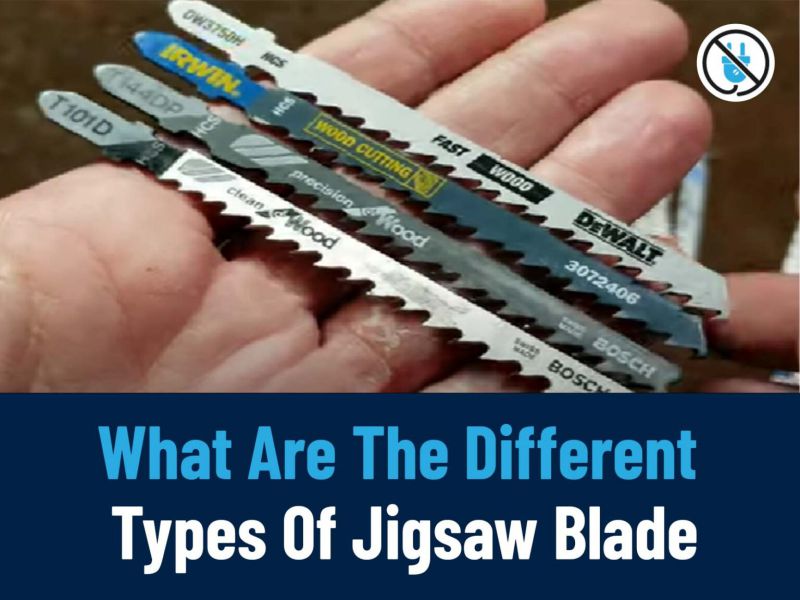
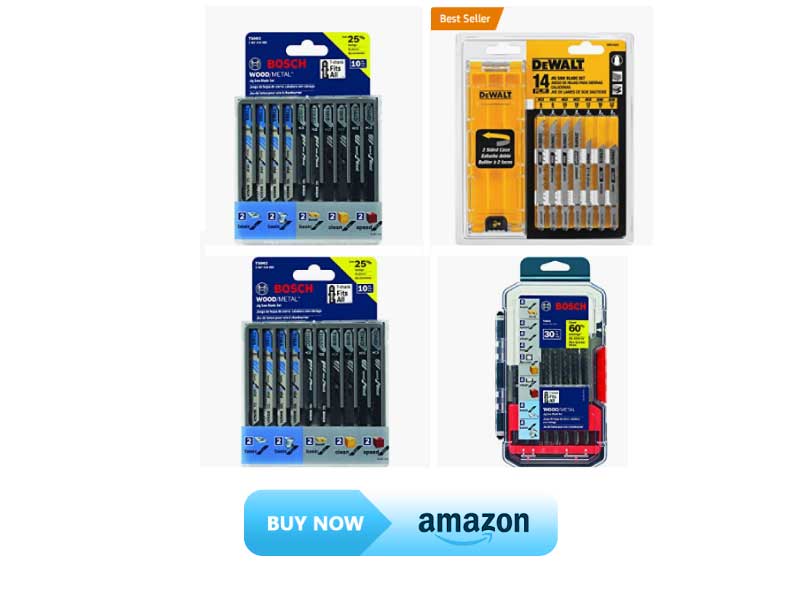
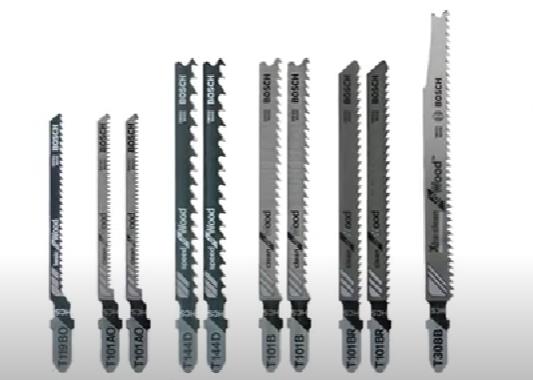
9 thoughts on “What Are The Different Types Of Jigsaw Blade? 2023’s Best Types”
Comments are closed.